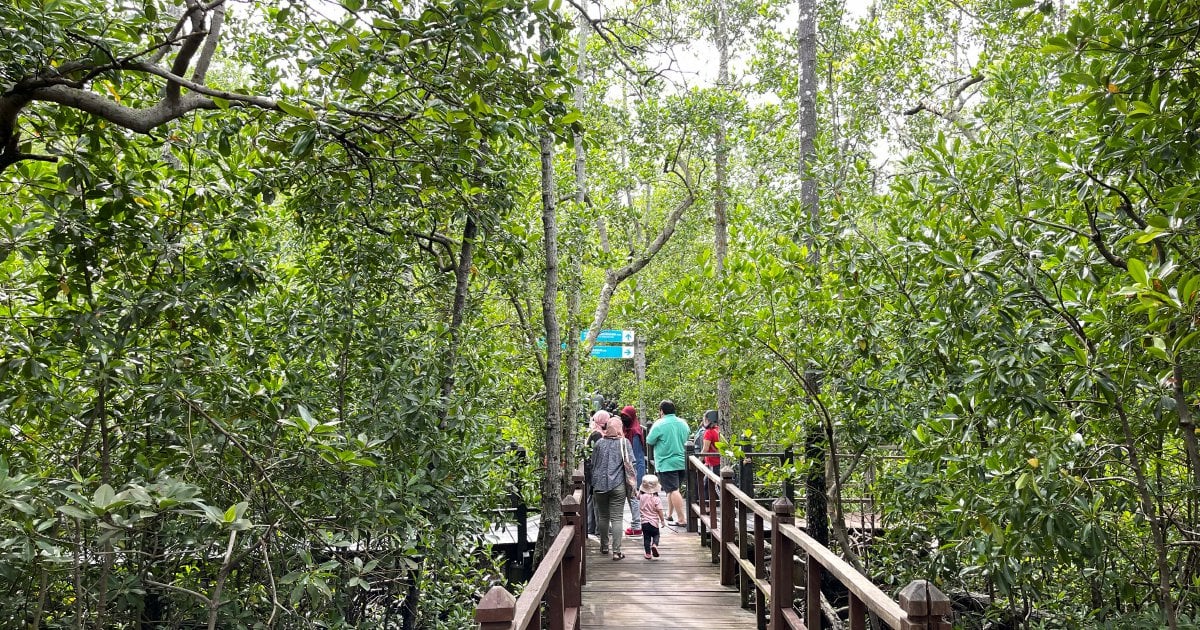LETTERS: More mangroves and peat swamp forests will be legally protected within the 13th Malaysia Plan time-frame, 2026-2030, as tabled by Prime Minister Datuk Seri Anwar Ibrahim on Thursday.
In the same tabling of the new five-year national development plan, efforts to protect and restore mangroves, coral reefs and other wetlands were also pointed out as a critical means for nature-based climate and environmental solutions.
They are now prioritised as the key national approach in securing the country’s vulnerable coastlines, including to ensure the safety and well-being of coastal communities.
To ensure successful mangrove restoration, Malaysia must first establish a comprehensive plan, which begins with the identification and assessment of all disturbed and degraded mangroves.
Unlike terrestrial forests, the dynamics and changes faced by our coastal ecosystems are much faster, and the challenges facing them are also much harsher.
Thus, assessment of the status of all gazetted mangroves (in which some were already made over a century ago) should be carried out at the initial stage to accurately prioritise further actions.
Are these mangrove forest reserves still forested? Have the forested areas expanded? Can they cope with the upcoming impact of sea level rise and other climatic and oceanic hazards?
These are basic questions crucial to be answered. In addition, requests to encroach and exploit intact mangroves should be permanently and strictly disallowed, to ensure no deficits to achieve this mission.
Strict enforcement of the laws should also not be neglected.
According to the document, new gazettement of mangrove forests, either as a forest reserve or a state park, marine reserve or a marine park, is highly encouraged.
Consequently, listing them under international conservation programmes is also very much encouraged.
There is a buffet of options, including as a Ramsar Site under the Convention of Wetlands, or through Unesco programmes like the Man and Biosphere, World Heritage, Ecohydrology, Global Geoparks, and several others.
It is important to note that mangrove habitat restoration is not a numbers game, and planting is not the only mechanism to achieve it. Planting should be one of the later, if not last, actions to be taken.
It is not about the number of seedlings or saplings to be planted; it is the area of recovered mangroves or area of new mangrove forests to be gained that should be aimed, quantified and reported.
All ongoing ‘planting’ programmes or any new ideas to ‘plant’ mangroves, either by government agencies, corporate organisations, or communities, must undergo a total revamp and be replaced by the true understanding of habitat restoration, as correctly envisioned in the 13MP document.
It is pertinent for project proponents to: understand the targeted site to be restored; resolve land tenure or ownership; identify the causes of habitat loss or degradation, and plan on how to rectify them.
We must consider the landscape approach, in essence, habitat connectivity, by ensuring the health of adjacent habitats and ecosystems like mudflats, sandflats, seagrass beds, coral reefs, beaches, and others; rectify issues like hydrology, sedimentation, elevation, tidal range, freshwater inputs, and other physical characteristics; monitor natural recruitment and recovery of the site; and, get in touch with the surrounding local communities.
Get them involved in restoration plans and activities; and then, finally, plant the right species in the right place — only if the area requires assisted regeneration.
Restoration activities do not stop there. Continuous monitoring and surveys must be carried out at regular intervals, and data must be properly recorded. This is especially crucial to justify the time, energy and financial investments being put in since the planning to the execution phases.
The assessment is particularly crucial not only to verify and report the gains (or losses), but also to ensure integrity and credibility, especially if the project involves carbon credit or other financial mechanisms.
All in all, it is an excellent move by the government in recognising the importance of protecting and conserving mangroves and other wetlands as nature-based solutions to tackle the many environmental, climate and sustainability issues the country is facing.
I sincerely hope that this vision is strongly supported by sound scientific approaches and methodologies, as it involves the future of our planet and the survival of our future generations.
DR A. ALDRIE AMIR
Associate Professor
Institute for Environment and Development (LESTARI)
Universiti Kebangsaan Malaysia;
Coordinator
The Malaysian Mangrove Research Alliance and Network
© New Straits Times Press (M) Bhd






